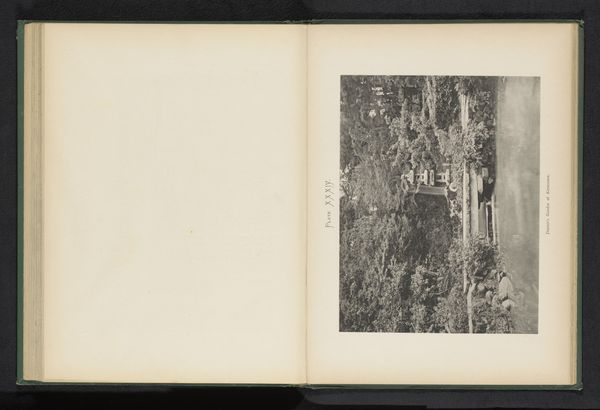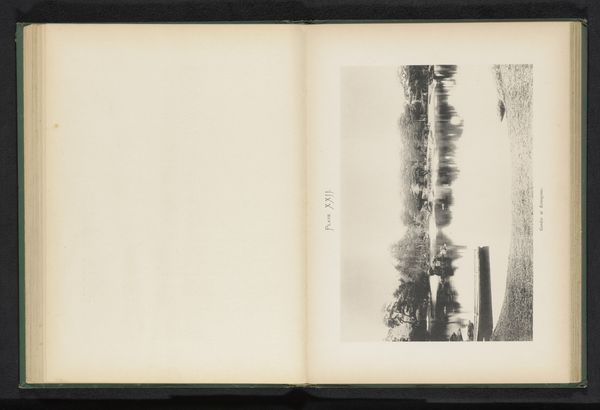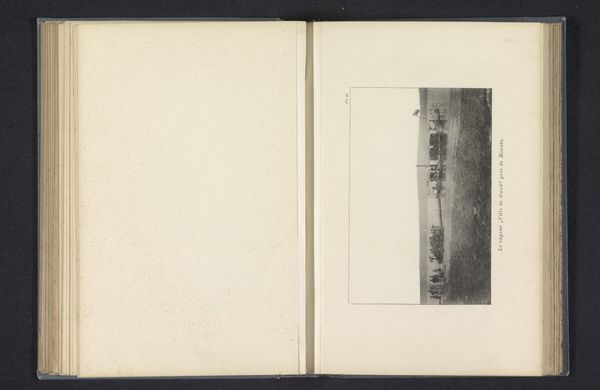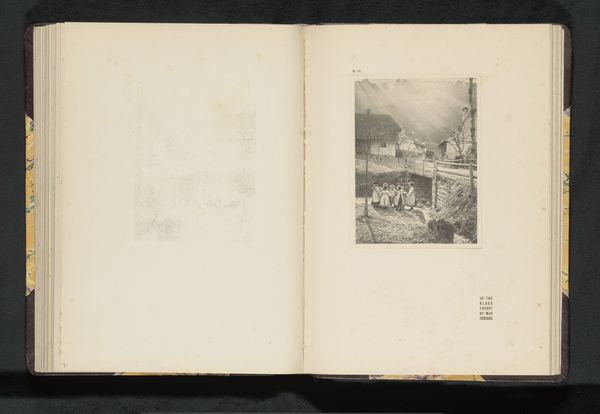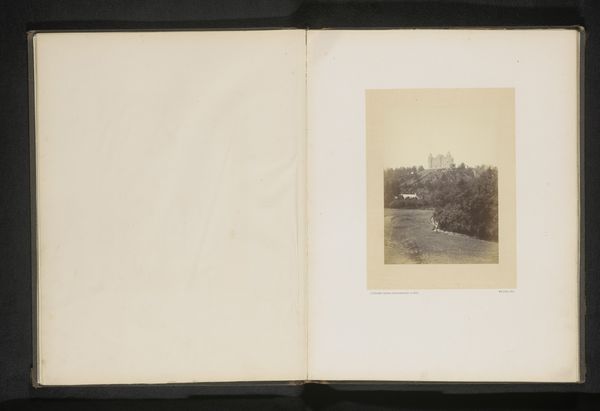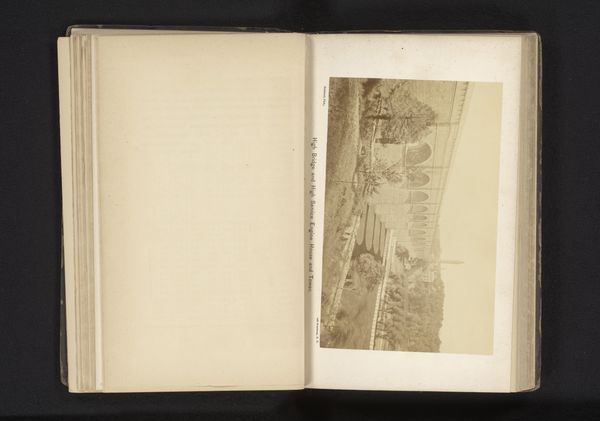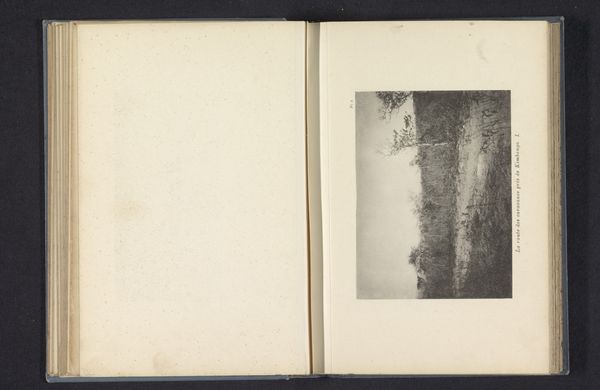
photography, gelatin-silver-print
#
landscape
#
photography
#
gelatin-silver-print
Dimensions: height 197 mm, width 254 mm
Copyright: Rijks Museum: Open Domain
Curator: Before us, we have "Gezicht op de Kinkaku-ji in Kyoto, Japan," a gelatin silver print created by Kazumasa Ogawa sometime before 1893. Editor: Ah, the Golden Pavilion! I see this and I instantly feel transported. There's a serene stillness to this scene, like a whisper from another century. The texture…almost velvety, wouldn't you say? Curator: Indeed. Ogawa's manipulation of light and shadow within the gelatin silver process lends a remarkable depth. Notice how the geometric precision of the Kinkaku-ji is deliberately framed by the organic, almost chaotic arrangement of the surrounding foliage. Editor: Chaotic maybe, but comforting! For me it emphasizes the pavilion's… preeminence. Almost like the building is arising organically as a jewel set within an otherwise naturally rough environment. What do you think is the artist’s intention behind showcasing this specific interaction of architectural shapes in the composition? Curator: Through the contrasting textures, the image suggests the synthesis between human artistry and the untamed energy of nature—central to tenets of Zen Buddhism—an aesthetic heavily embraced within Japonisme. Editor: Very good point there! And this building…It’s been burnt down a couple times, right? There's something achingly vulnerable and ephemeral in seeing it captured like this, knowing its history. Like a beautiful dream that might vanish at any moment! It's kind of eerie, even. Curator: You perceive a vulnerability in the rendering; I understand. Yet, Ogawa has memorialized an immutable ideal; regardless of destruction, this image immortalizes an aspiration of spiritual grace—a Platonic Kinkaku-ji, if you will. Editor: A Platonic ideal! Hah. Well, for me, art should touch, breathe and hurt a little, sometimes… What did they feel, or want the viewer to think seeing this? A perfect image would mean nothing if you don't touch the soul. I wonder, would seeing it in real life be less interesting somehow? Curator: Intriguing. It is the objective of all photographs: to encapsulate what would otherwise exist unperceived, to capture lightning in a bottle. Ultimately, I think Ogawa offers not only an exquisite artifact but provokes discourse between that which can be felt versus thought; indeed the photograph may be more evocative. Editor: Maybe! Well, looking at it again now, I think it definitely sparked a feeling—like I could almost smell the damp earth and the cedar trees… So, bravo, Ogawa. Wherever you are!
Comments
No comments
Be the first to comment and join the conversation on the ultimate creative platform.
